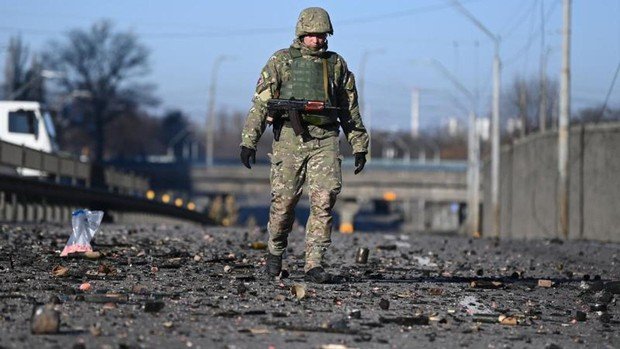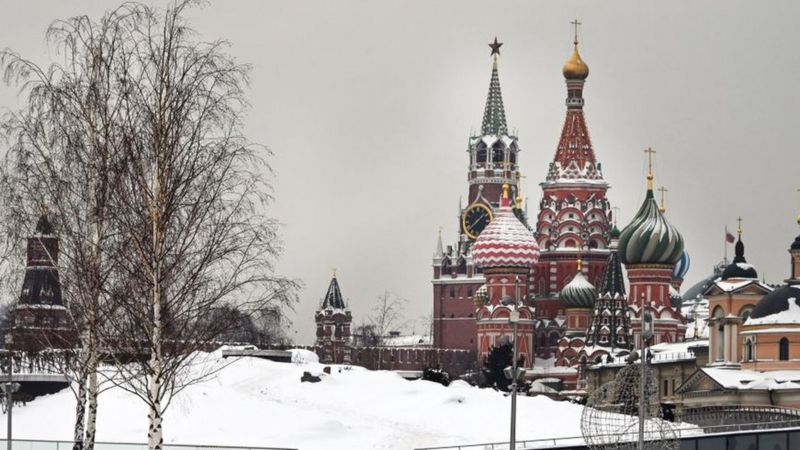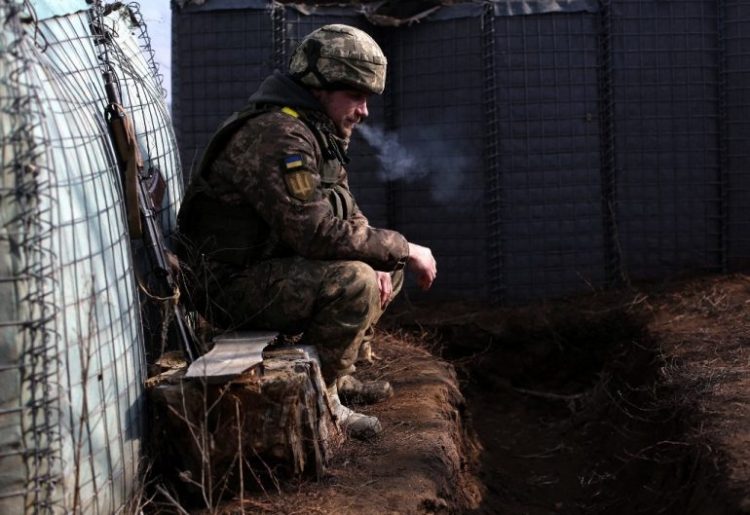At a time when the clumsiness and underestimation towards Russia prevails in its regional security demands, and a conflict that threatens the use of nuclear weapons, the Ostpolitik (policy towards the East) promoted by German Chancellor Willy Brandt in the 1970s, recalls a certain dose of realism in international relations that is lacking today in transatlantic security designs. It is necessary today as never before, in the face of nuclear powers that are certain of mutually assured destruction.
It was a policy that, in the midst of global designs and strategies of open confrontation between the West and the Eastern European socialist bloc during the cold war period (domino theory, flexible response, mutually assured destruction…), opted for normalization and negotiation with the countries on the other side of the iron curtain. It was a realistic policy, framed in a conception of international relations that understands European order and stability also by mutual recognition and by establishing mechanisms that guarantee the balance between powers.
A war that stirs up today’s convulsive world
The European security scenario, which has led to this open and criminal aggression against Ukraine, is the product of an unprecedented mediocrity in finding necessary points of balance between the interests and challenges of collective security. Some miss a healthy dose of realism in international relations.1 And I don’t think they are wrong. Nothing better, this “logic between powers,” than some advice from 2014, recently remembered, from a realist like Henry Kissinger for those who design security policies on both sides of the Atlantic.2
The Ukraine crisis, it is not idle to remember, occurs in a period of recomposition of the international order. The world of today is not the world of yesterday. The crisis of globalization is accompanied by an unprecedented response to the alleged U.S. unilateralism. China and Russia are, without a doubt, the most important sources of concern in the disputes for hegemony in the face of the United States and the European bloc.
The United States is in a period of transition — many agree on that —, and the intended return to the liberal idea in international relations, after Donald Trump’s convulsive period, has not been accompanied by a coherent foreign policy towards many parts of the world. Latin America is perhaps an eloquent example.
Several internal open fronts (pandemic, political polarization, inflation, growing disbelief towards the political system, etc.) are combined with an inability to metabolize vertiginous changes in the international order, with resounding failures like Afghanistan in 2021. This leaves the feeling of a “zigzagging and weak policy” — in U.S. terms — that perhaps recalls that atmosphere left by the administration of Democrat Jimmy Carter.
For Europe, the security challenge with the aggression against Ukraine catches it at the beginning of a path for its “strategic autonomy,” which also includes placing Europe’s role in the world in terms of international security.3 It is an urgency in the face of the subordination of interests in this field to the foreign policy of the United States, the largest contributor to NATO. In the field of foreign policy, the European Union lacks its own line of conduct. The Ukrainian crisis has not ceased to show the secondary role assigned to the community bloc and the preponderant role of the United States in the problems that most directly affect this part of the world. The exclusion of the main authorities of the community bloc, in some of the most important negotiations between the United States and Russia on this recent crisis, confirmed this reality.

Absence of a realistic policy
The creation of the Soviet space, with Ukraine inside it, was a conflictive process that can also be traced in many phases of Russian history: the integration of peoples with dissimilar characteristics in a national ideal, which appealed to socialist brotherhood, to proletarian internationalism and to be understood as a “bloc” against the capitalist West. This process was accompanied by demographic movements that diluted or diversified in many cases racial and ethnic borders.
The Brezhnev doctrine (limited sovereignty), according to which the borders between the socialist countries were no longer “territorial” but “ideological,” and where every problem in a socialist state was understood as a common problem for the socialist world, had a military translation in the Warsaw Pact in the face of NATO.
In these, the Soviet republics and neighboring states became — it has been rightly said — mere “military theaters” or “strategic directions” in their military projections: that is, in the same way that it was understood as part of their western strategic direction for the “German Democratic Republic, Poland, Czechoslovakia, Estonia, Latvia, Lithuania, Kaliningrad, Belarus and Carpathian region,” the southwestern direction was understood as “a territorial extension composed of Soviet regions and other independent states: Kiev, Odessa, Romania, Bulgaria and Hungary.”4
The disintegration of the Soviet Union was accompanied by a military, political and economic decline on the international scene. But perhaps the territorial problem, the disintegration and independence of States that previously belonged to only one, is a trauma that the current leadership understands as its main challenge. The pain that Putin reminded Oliver Stone in his documentary Interviews with Putin, about the fact that, with “the collapse of the Soviet Union, 25 million Russians were expelled from their country in a single night,” which was equivalent “to one of the great catastrophes of the 20th century,”5 is indicative of the frustration for the Russian leadership of the scenario created since then and where sights are set.
With this event, the demons were unleashed. The tension shifts to various scenarios: the expansionism of NATO, the full integration of former allies into the security and cooperation schemes of Western Europe, the flirtation of these former Soviet republics with the West, and the use by Russia of all the means to prevent it.
Some constants can be established among the actions most used by Russia to stop this rapprochement of the States that once belonged to the Soviet space: using armed force (Chechnya), encouraging unilateral declarations of independence (Transnistria, Abkhazia, South Ossetia, and now recently Lugansk and Donetsk), annexation (Crimea), among others. Nationalism in these areas flourished and disputed in many areas (ideological, symbolic, economic, etc.) the presence of its former “colonizer.” For Russia, these movements are unsustainable and even more so if they are part of Western European security schemes, which constitute an intolerable threat.
It is for this reason that the conflict in the former Soviet space is understood by Russia as a conflict between its borders. And the threats from States of the former socialist bloc, as a direct threat from their former allies. Stalin’s obsession with not giving even a millimeter of his sphere of influence to states like Poland in the postwar period had practical and historical implications: several attacks on Russian soil have come through Polish territory, Stalin would recall Churchill while they debated and disputed the postwar world.
The West, and especially Europe, have not wanted to understand Russia’s security problems. The interests of the United States have prevailed, with its own logic of confrontation with Russia. American national and security interests have compromised the true interests of European security in the search for a solution to this problem.
The end of the cold war unfolded an unprecedented scenario to make the interests of both coincide. Do not forget that the Koziriev Doctrine, promoted by the Russian leadership in foreign policy during the transition after the collapse of the Soviet Union, sought to bring strategic positions closer to the United States, on an equal footing, to form an “alliance.” Even the possibility of Russia joining NATO was on the table.
However, the bet was for marginalization and confrontation. This led Russia to the idea of an imminent threat and increasingly siege moves. Several events did not go unnoticed by the Russian leadership: the NATO bombing of Yugoslavia, support for the recognition of Kosovo’s independence, and the expansionism of the transatlantic organization that continues to this day: Hungary, Poland and the Czech Republic in 1999; Bulgaria, Slovakia, Slovenia, Estonia, Latvia, Lithuania and Romania in 2004; Croatia and Albania in 2009; Montenegro in 2017; and North Macedonia in 2020.
Putin’s arrival in power in 1999 prioritized rearmament, economic growth, and positioning Russia once again as a major player on the international scene. Since then, attempts were made to build alliances and cooperation schemes to strengthen its “sphere of influence” among its neighboring states: the Shanghai Cooperation Organization (SCO) in 2001, the Eurasian Economic Union of 2014, to which is added the Collective Security Treaty Organization, which has a history.
Nor can it be said that Putin’s foreign policy was one of open confrontation with the West, and fundamentally towards the United States. The open aid to the United States and NATO after the terrorist attacks of 2001, the Treaty for the Reduction of Strategic Offensive Arsenals, the installation of the NATO-Russia Council in 2002, are proof of this.
Several events even register the Russian proposals for the creation of a European defense architecture in Europe — only European —, which only had the inconvenience (small inconvenience) of excluding the United States from the equation. These proposals, whose antecedents can be found in Mikhail Gorbachev’s “Common European Home” in 1987, tried to coincide around the Organization for Security and Cooperation in Europe (OSCE) the components of European security (proposal of Russian Prime Minister Yevgeny Primakov) or the entry into force of a European Security Treaty in 2008, at the time of Dimitri Medvedev.6
However, these rapprochements clashed with the deployment of an anti-missile system in Eastern Europe in the harshest era of George W. Bush’s unilateralism, and provocations in the states closest to Russia. Since then, struggles for geopolitical positions in Asia, Latin America and Africa have marked the course of Russia’s relations with the West. Some author has considered that the conflict in Georgia in 2008 and Ukraine in 2014 marks a turning point in Russia’s policy regarding NATO expansionism, between “passive discontent” and “active revisionism.”7
The Ukrainian conflict
In an excellent work published on this same website, Julio César Guanche addressed some more remote antecedents of this conflict in Ukraine: the events of 2014, the annexation of Crimea, the declaration of independence of the Donetsk and Lugansk Republics, the frustrated Minsk Agreements, Volodymyr Zelensky’s domestic and reactionary policy, Russia’s suspicions about Ukraine, etc. I will concentrate, therefore, on highlighting a relevant point of recent months.
Ukraine seemed to be, and indeed was, Moscow’s red line in NATO expansionism. In December 2021, Russia attempted to negotiate, American West-style, two draft treaties (behind the Russian table was an incessant movement of troops along the border with Ukraine and a threat to resort to force if the demands were not met). They were titled “Treaty between the United States and the Russian Federation on Security Guarantees” and “Agreement on Measures to Ensure the Security of the Russian Federation and the Member States of the North Atlantic Treaty Organization.” Expert Mira Milosevich-Juaristi summarizes the content of the Russian demands:
“(1) formal cessation of NATO’s eastern expansion; (2) a permanent freeze on the expansion of the Alliance’s military infrastructure (bases and weapons systems) in the former Soviet territories; (3) end of Western military assistance to Ukraine; and (4) a ban on intermediate-range missiles in Europe.”8
The answers to these demands are already known. In a united front, the United States, the European Union and NATO not only rejected these proposals-demands, but escalated their rhetoric just like Russia. Although dialogue was not ruled out, in the midst of the most worrying threats of aggression, insisting on the point of Ukraine’s possible integration into NATO did not help at all.
The United States and the nuclear-capable NATO countries are aware of the limits of today’s wars. Beyond the harsh economic sanctions on Russia, NATO Secretary General Jens Stoltenberg’s “we are prepared for the worst” at the end of January 2022 is a caricature of the effective responses they have been able to provide on the ground to help Ukraine against the aggression of a nuclear power.
This time Russia went beyond showing its teeth, although it also knows the limits. Perhaps, and almost certainly, it trusts the prudence of the West to avoid a nuclear holocaust. But this can only be achieved with a correct policy — albeit the wrong moment — that inevitably passes through a different European security architecture, which inevitably includes Russia’s interests and concerns and recovers the best Ostpolitik spirit.

European security, within NATO’s structural frameworks, is destined to fail if it does not seek negotiation and stability with Russia today by recognizing themselves as actors with their own interests and strategic projections in the European concert. Russia is part of Europe, although this is often forgotten. And the ever-deeper insertion of Russia in Europe, with common points of understanding on which each party must yield in some initial positions, is the only way that European security can be guaranteed.
What remains for the States of the periphery in the face of the aggression against Ukraine, for those who remain in the logic of schemes and spheres of influence?
I have argued at another time: I don’t think anyone serious doubts that neither NATO nor the United States has the moral authority to give lessons on non-aggression to sovereign states. But in February 2022 Ukraine was not militarily attacked by either NATO or the United States. Not this time.
In this scenario, care must be taken to agree to a “logic of spheres of influence,” or logics that resemble this idea, and that is typical of stories of powers to take positions in the face of events as serious as these in Ukraine. The countries of the periphery, of the Global South or of the heritage of the “non-aligned,” are wrong (from my humble opinion) to incorporate demands with this same logic in their supporting document on foreign policy. None of them escapes the “spheres of influence” of other powers. The States of the Americas know this very well in the face of Rome, which watches over them and has attacked them for centuries.
Assuming this logic described in political discourse violates and makes incoherent the two principles on which the foreign policy of those who are constantly threatened and are in the “spheres of influence” of other powers must revolve: the principle of non-interference in internal affairs and the principle of self-determination. In politics, what is “real is what is seen,” and behind that complicated balance of interests and principles, dissimilar extremely complicated issues are debated. But also in politics “coherence is a virtue,” when at least you are not in a position to act with the total impudence as the powerful have done on more than one occasion.
If we transpose a discourse that “values the just claims” of Russia’s regional security, and concludes, inter alia, that Russia “has the right to defend itself” (by the way, language not in accordance with the requirements of the United Nations Charter to use force in legitimate defense, since it is closer to Bush’s illegal “preventive legitimate defense”), subscribe to and accepts this type of logic of spheres of influence. For obvious reasons, this could have dire consequences for States in the orbit of influences of other powers, or at least put it in the position of incoherence, at the discursive level, when they are Ukraine.
Notes:
1 WALT, Stephen M., “Liberal Illusions Caused the Ukraine Crisis,” Foreign Policy, JANUARY 19, 2022. Available here.
2 KISSINGER, Henry, “Henry Kissinger: To Settle the Ukraine Crisis, Start at the End,” The Washington Post, March 5, 2014. Available here.
3 BORREL, J., “The Sinatra Doctrine,” Foreign Policy, September 1, 2020.
4 SALAZAR SERANTES, Gonzalo de, “Rusia en el escenario de seguridad: una aproximación a su concepción de la política exterior,” Cuadernos de estrategia, Nº. 101, 1999, pp.71.
5 “Interviews with Putin (Chapter 1)- Oliver Stone | Documentary in Spanish.” Available here.
6 MILOSEVICH-JUARISTI, Mira, “Las últimas propuestas de Rusia para cambiar el orden de seguridad europeo creado después de la Guerra Fría,” ARI 3/2022 January 25, 2022. Available here.
7 ibid.
8 ibid.










